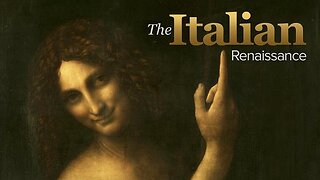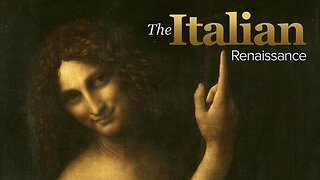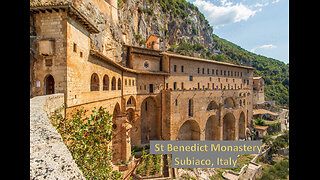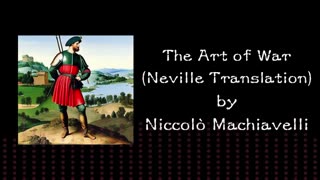The Italian Renaissance | Urbino (Lecture 16)
Lecture 16: Although a tiny principality of only 40 square miles perched in the Apennines, Urbino became one of the most celebrated sites of Renaissance culture. Because the inhospitable nature of the terrain made it difficult to coax much from the soil, the population sustained itself for generations by serving as mercenary soldiers fighting under the signori of the Montefeltro family.
The most famous of the Montefeltros was Federigo, who ruled from 1444 until his death in 1482. In addition to being a great leader, never losing a battle, and—uncharacteristically for a mercenary—never betraying a client, Federigo was among the greatest patrons of culture in the Italian Renaissance. His new palace was a center for study and art, welcoming such painters as Piero della Francesca and Giovanni Santi, father of Raphael. He patronized scholars who worked constantly on his library until it became one of the most important collections of manuscripts in Europe, and his books were among the most beautiful, as illustrated by the incomparable Urbino Bible. After many pregnancies, Federigo’s wife, Battista Sforza, finally produced an heir, Guidobaldo (1472−1508). But he proved to be sickly and weak, no match for the invasion of Cesare Borgia.
Primary Source Texts:
Vespasiano da Bisticci, “The Life of Federigo da Montefeltro,” in The Vespasiano Memoirs: Lives of Illustrious Men of the XVth Century.
Secondary Sources:
James Dennistoun, Memoirs of the Dukes of Urbino.
Supplementary Reading:
Alison Cole, Virtue and Magnificence: Art of the Italian Renaissance Courts.
Lecture 17: https://rumble.com/v4y3sxk-the-italian-renaissance-castiglione-and-the-book-of-the-courtier-lecture-17.html
-
 30:11
30:11
The Great Courses
1 month agoThe Italian Renaissance | Renaissance Venice (Lecture 14)
41 -
 30:14
30:14
The Great Courses
1 month agoThe Italian Renaissance | The Recovery of Antiquity (Lecture 6)
56 -
 2:16
2:16
Life Happens
2 months agoExploring Subiaco, Italy: A Spiritual and Artistic Haven
190 -
 0:40
0:40
Improve Your Knowledge MK
2 months agoHow well do you know Italy? 🇮🇹 | General Knowledge Quiz #shorts
15 -
 4:16
4:16
RetireEarlyLifestyle
2 months agoOur Terrazza Lunch in Anzio, Italy
7 -
 0:39
0:39
Generally All-Around
2 months agoTwo Surprising Facts About Benvenuto Cellini
1 -
 10:46
10:46
RetireEarlyLifestyle
1 month ago $0.01 earnedA Walking Tour Around Anzio, Italy
9 -
 8:54
8:54
CatholicReboot
1 month ago $0.02 earnedEpisode 2170: St Pope Urban I
153 -
 7:01:00
7:01:00
Evergreen0I0AM
1 month agoThe Art of War -Neville Translation- by Niccolò Machiavelli
11 -
 7:05
7:05
CatholicReboot
1 month agoEpisode 2129: St. Flavia Domitilla
108